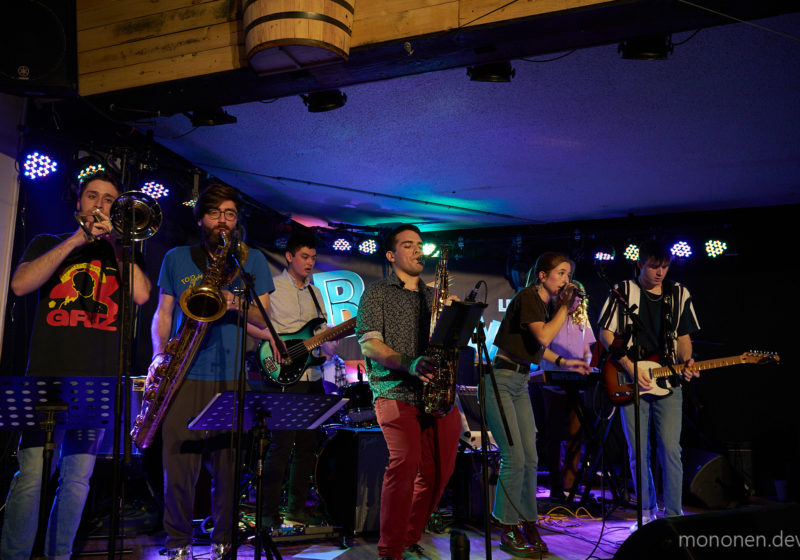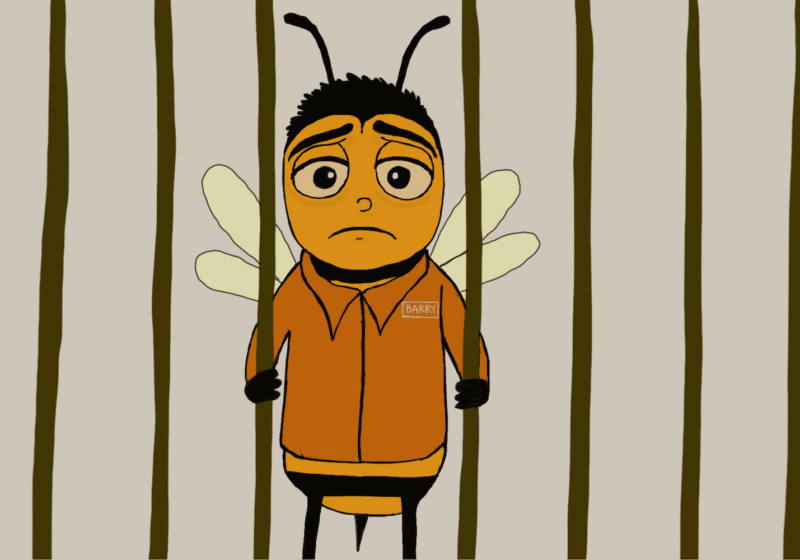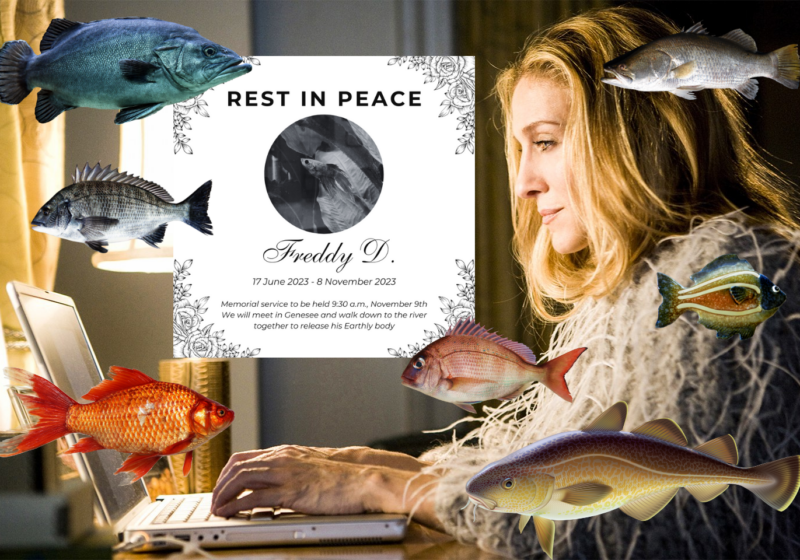Seniors Madeleine Vogel, Derek Skala, and Ben Kevelson, juniors Seth Roberts, Emile Hamwey, Geo Kulp, and Joey Willenbucher, and SUNY Geneseo graduate James Ambalavanar make up the pop-funk Rochester-based band USP. The Campus Times spoke to them mid-recording session about the creation of their group, working to form and keep a band running as full-time students, and the creative process among engineers.
Quotes have been edited for brevity, style, and/or clarity.
How did USP start?
Kevelson: We were looking to start a band with some of the jazz players for a few years, but we didn’t really have the people for it. You really need a perfect storm of players, especially in terms of a rhythm section, and it took a couple years for people to fall into place. The final piece was when we met James, who is this really talented drummer out of Geneseo. The first rehearsal we had was June last summer, and then we played our first gig at Tin Roof in August, and we’ve been playing gigs intermittently, recording intermittently, and just trying to do whatever we can.
Vogel: You’re staring at mostly junior and senior AME majors, and Ben and I have been close since freshman year, so a lot of the connections for starting the group kinda came from that.
What does a general week look like for you, and how is balancing student life with USP?
Vogel: So, we’ve had a couple of irregular weeks, but for a long time coming, we’ve been trying to have regular rehearsals on Thursday nights, and our big rehearsal day is Sundays for usually three to four hours, either at James’ house or in Rettner, depending on what we’re up to. We’re doing combination pieces, reading sheet music, running through sets for upcoming gigs, live streaming — we’ve got livestreams in James’ basement on Sundays called the “Groove Cellar,” which you can tune into. Also, a lot of our members spend time arranging for the group, so we spend time working on things people arrange covers for as well as original pieces they work on.
Hamwey: We do a lot of, “if you arrange it, we’ll read it, and we’ll likely play it,” which is a great culture to have — it benefits us because it makes it easier to come up with new things that we like, because it all comes naturally.
Roberts: So, basically, throughout the week we send covers of songs we want to do in our group chat and our Slack.
Vogel: Our whole group chat is just Spotify links and “oh, we should play this!”
Roberts: Yeah, and usually if more than one person likes the song, we’ll actually have someone arrange it, usually the person who suggests it. I tend to do pop-troll songs, so I’ve done Miley Cyrus, I did “Shake It Off”… usually, there’s always a few funk songs that everyone knows except for Madeleine, but we usually try and pick songs that all of us know, that our audience knows, and that we’ll have fun playing.
Hamwey: We try to balance the really technical stuff with things people love to hear because you have to have both, right? We have to have songs we will enjoy playing and songs people will enjoy hearing.
Vogel: It has to be relatable music — depending on who we’re playing to, we could sit up there and play the longest, most complicated jazz song ever, but it could not work for the audience at all. We’ve had covers where we’ve performed them and then been like, “never again,” and we’ve had to work on reading our audience to make those decisions. For example, we had a Stutson gig that was live streamed where we were really drilling our technicality, but then at a place like Tin Roof, it’s not like people are going to be watching for really specific licks! They’re just looking to have a good time. Part of the minor success that we’ve had really comes from figuring out how to give people what sort of a good time they’re looking for.
Who came up with the idea for “Groove Cellar,” and do you have any ideas to move that forward?
Hamwey: “Groove Cellar” came as an inspiration from one of our favorite musicians, this piano player named Emmet Cohen, and when the pandemic hit, he started doing these livestreams in his living room with these incredibly talented jazz musicians. Then, he started adding more camera angles than just his phone, and nicer microphones, and kept upping the production quality with more high-profile guests. We thought a similar thing would be a good way for us to connect with our community — Rochester’s a great, big place, but a lot of us have people who want to tune in from farther away who we want to include. We’re trying to do our live streams every other week, Sundays at 2 p.m., and work on doing both improvisation and covers. A friend of mine is a film major, and he’s going to help us with upping our production quality in terms of video and audio.
Kevelson: One thing that the livestreams are great for is that since this group is pretty large comparatively and we have diverse schedules, it’s hard to find a large block of time together to do something. If there isn’t a gig we’re working towards, it’s hard to stoke the flames and keep pushing to get together and keep on working, so having a thing we can work on consistently that will help us keep practicing and maintain a fanbase is really helpful. It especially helped last semester when our gigs were still nebulous and we were really fresh as a group.
Are there any endeavors you’re really looking to push forward on, such as collaborations like the one you did with BB Dang?
Roberts: Yeah, we’re trying to sell out Madison Square Garden.
[Everybody laughs]
Vogel: I feel like each of us comes from a very different realm of music here, and we’re looking to do gigs with people we have connections with. The more we realize there are people out here doing the same things as us, the more we can work together and keep working on our own sound. The BB Dang/USP collaboration was a gig we got as a result of me knowing their lead singer, Isabella, (LINK BB)and we’re looking to do more things like that in the future. Just trying to expand our reach and doing it for the love of music and making the connections is so important.
Ambalavanar: Even if we didn’t have any gigs, I would come here and play music with these guys every single Sunday. It’s the most fun I’ve ever had playing music.
Willenbucher: It’s in my top two.
[Everyone laughs]
What is the creative process like for you guys making tracks?
Willenbucher: I’ve taken the lead on recording because it’s something I love doing, and I mixed our last single “One Way Ride,” but I’ve also written a lot of our music with Ben. Seth came in with a song recently that I think is one of our best ones, so now we’re working on trying to record multiple tracks and trying to potentially piece it into an album.
Kevelson: We also knew we wanted to do a couple original songs, but for our first few gigs, we were exclusively focused on covers except for one original. Recently, we’ve had a few days where we’ve gone in the studio and tried to churn out as much new music as possible, which was interesting to see how everyone approaches the creative process differently. There are a lot of different aspects of putting a track together, and we’re like a Swiss Army Knife in how everyone has a function in getting everything to work.
Hamwey: It usually all starts with a voice memo, and with time in rehearsal, we start to put more things together. After that all comes together, that’s when we start thinking about live arrangements and what we could do to record it.
Vogel: When we get in the studio, you would think it would be too many cooks with a band this big, but there are so many things to do in the recording process that having a bunch of people with AME experience know what to do makes the team operations so much smoother. When we get to the technicality of the mixing, that’s when opinions get more difficult.
Hamwey: There has never been a moment where we’ve had any disagreement that’s been gamebreaking, though, and that speaks to the respect we all have for each other and our prioritization of this group and its culture.
Vogel: I think that came from the start, though — when we played ‘Suit and Tie’ for the first time, I think we all kinda blacked out and jammed out. Afterwards, we all just looked at each other like, “woah, did that just happen?” From the first month that we started playing together, we all just clicked, and the respect came immediately as a result. I think the biggest thing is that we just vibe so well on stage — I can just turn to Geo or anyone else and immediately lock in, and with a group as big as this, I think that’s a testament to how we do things.
Ambalavanar: I have voice memos from our first rehearsal that I still listen to.
Kevelson: The good thing about the livestreams, now, is that everyone can see that band dynamic, which really sets us apart from other bands who only release music.
Any upcoming information people should be on the lookout for?
Hamwey: All our updates are posted on our Instagram, so if you’re interested in what we have coming up, be sure to check there. We have past concert excerpts on our YouTube channel as well along with our livestreams.
USP will be performing a gig at 75 Stutson Street with the UR Jazz Combo on Apr. 2 at 7:30 p.m. Proceeds will be benefiting Ukrainian relief efforts.





